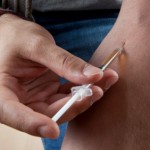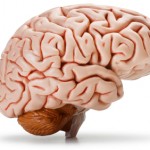Recently our local paper, the Fort Collins Coloradoan, published a USA Today article titled "Missouri grapples with meth." I read about the nearly 7,000 law-enforcement seizures of laboratories and methamphetamine-related material in 2011 (through late November), saw that Colorado wasn't in the top ten states involved (at least in methamphetamine lab seizures) and wondered why Missouri, with 1,744 confiscations, was clearly the hot spot for this drug
A contentious issue is whether state law requires a doctor's prescriptions for over-the-counter medications containing pseudoephedrine, a chemical also used for meth production. That's not true in Missouri where, at present the rules vary from county to county. Oregon and Mississippi have already passed such laws with impressive declines in meth seizures as a result. Fifteen other states have proposed similar legislation.
Then I found a series of articles that brought this issue squarely home to my state. In April 2011 the Denver Post published two articles about proposed Colorado legislation that, if passed by the state Senate, would have made a number of pseudoephedrine-containing medications, used to treat the symptoms of colds and allergies, available only by prescription; eventually the potential new law went down to defeat by a 7 to 2 vote.
Yet the Colorado Meth Project, part of a much larger, multi-state prevention program whose focus is reducing the usage of this drug, said my home state ranked 7th in the U.S. in total number of "past-year meth users" aged 12 and up in a national survey on drug use during the 2006 to 2009 time frame. Did the "12 and up" catch your attention? This campaign, named the world's 3rd most effective charitable endeavour by a national magazine, was started in 2005 and works in three arenas: public service messages, public policy and community outreach.
It's been given credit for marked reduction of methamphetamine use in a number of states. As part of an ongoing CDC surveillance system, monitoring six types of health-risk behaviors that contribute to the leading causes of death and disability among youth and adults, the 2010 Youth Risk Behavior Survey saw a highly significant decline of teen meth use: 52% in Idaho, 63% in Montana and 65% in Arizona.
But we're not just speaking about teens. In late November of 2011, a 68-year-old former Colorado county sheriff was arrested; he allegedly was trading meth for gay sex. If proven guilty, he clearly wasn't alone in his drug-related activities.
So returning to the question of why is this particular illegal substance so important? It's a highly addictive stimulant responsible for risky sexual behavior and extreme violence. The Centers for Disease Control and Prevention (CDC), published an extensive 2007 review on methamphetamine use and the risk for HIV/Aids. After discussing research indicating that meth-using gay men may increase their risk factors, they mentioned that heterosexual adults and adolescents who use meth may also engage in sexual practices that markedly increase their possibility of developing STDs including HIV.
That's by no means all that methamphetamine does to its users, but I'll write more concerning the chemistry and effects of the drug in my next post.















